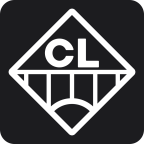Positive focus cutting is a technique that precisely sets the laser focus on the top surface of the workpiece. The core principle is to make the light beam form a larger spot at the bottom of the material, thereby enhancing the oxidation reaction involving oxygen. This can significantly improve slag discharge efficiency and reduce slag adhesion. This process is mainly used for oxygen assisted cutting of carbon steel, especially for processing medium and thick plates over 25mm.
Achieving high-quality cuts depends significantly on three core parameters: focal position, auxiliary gas pressure, and cutting speed. This guide explains how these factors impact cut quality and provides practical solutions for common issues.
1. Impact and Adjustment of Focal Position
Focal position too high: Uneven energy distribution occurs. The upper section receives concentrated energy, resulting in a smooth upper cut, while insufficient energy at the bottom leaves slag residues and roughness.
Focal position lagging: Reduces heat absorption at the lower edge of the material, causing incomplete melting and sharp residue sticking.
Common Issues:
Rough lower portion of the cut with slag residue.
Inconsistent cutting slopes and incomplete penetration.

2. Auxiliary Gas Pressure: Influence and Optimization
Pressure too low: Insufficient gas flow into the cutting slot fails to effectively remove molten slag, leading to rough cut surfaces or cutting failures.
Pressure too high: Excessive gas pressure can create turbulent flows or shockwaves, disturbing the laser focus and reducing melting efficiency, possibly causing wider or burnt cuts.
Gas purity: Oxygen purity should be at least 99.6%; impurities hinder proper oxidation and reduce cutting quality.
Common Issues:
Excessive slag buildup and rough surfaces at high pressures.
Sticky residues due to low pressure.

3. Cutting Speed: Controlling Quality and Efficiency
Speed too fast: Insufficient laser energy input leads to incomplete penetration of the lower part, slag cannot be discharged in time, and the incision is rough.
Speed too slow: Excess heat accumulates, causing wider cuts and possible material deformation or burns.
Common Issues:
Rippled or jagged edges on cutting surfaces.
Incomplete cuts or re-solidified slag.

Comprehensive Problem-Solving Tips
1. Regular, rough stripes: Significantly increase cutting speed or slightly decrease laser power.
2. Rough upper surface with slag underneath: Increase focal length, select smaller nozzles, and lower gas pressure.
3. Clear top texture with rough bottom: Raise focal position and cutting height.
4. Persistent slag adhesion: Increase focal length, use a larger nozzle, and raise gas pressure.












